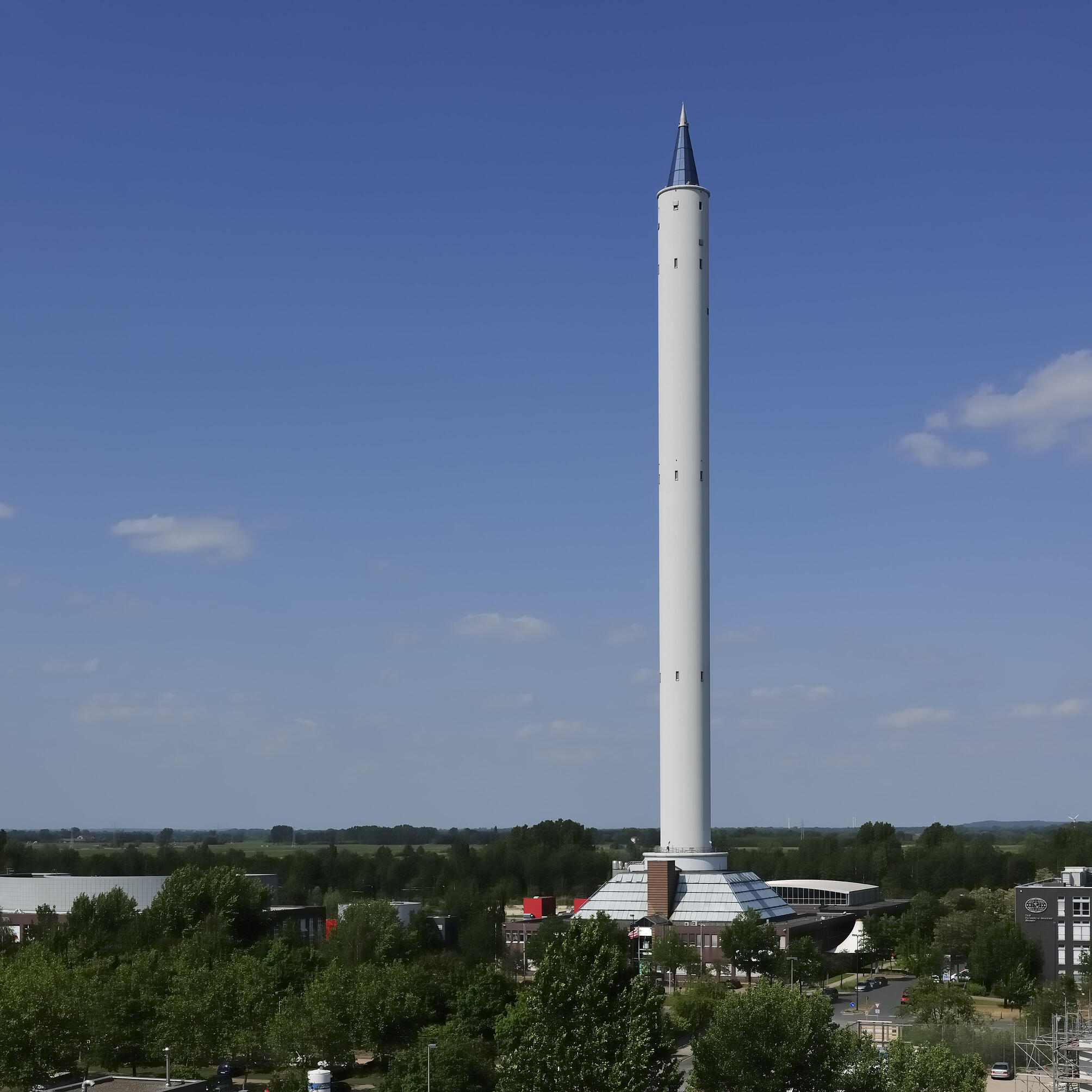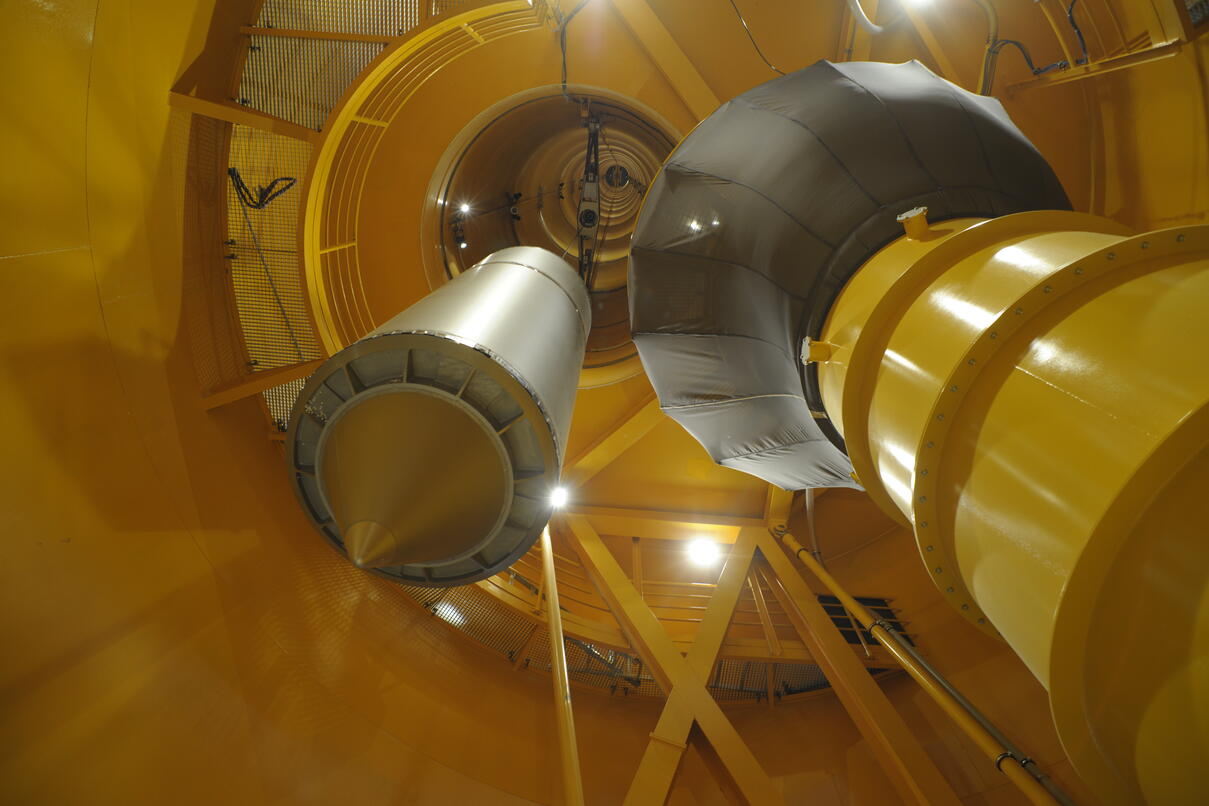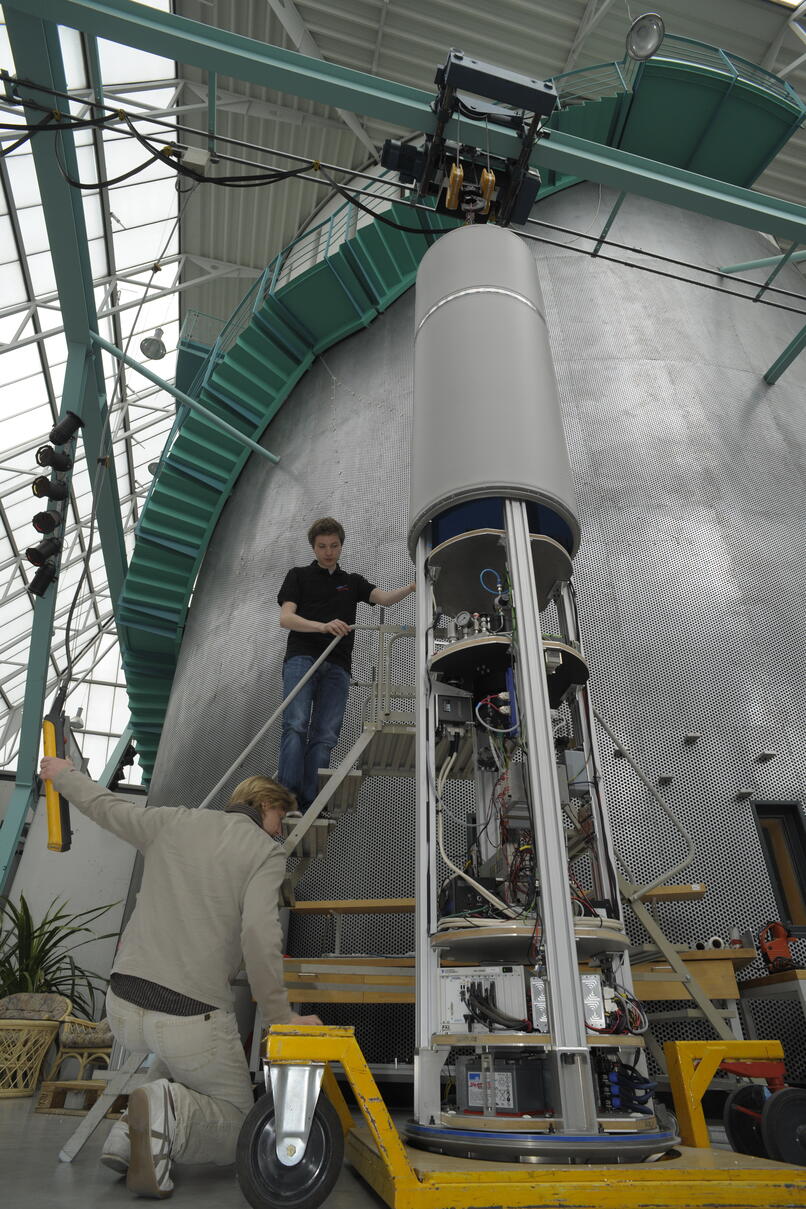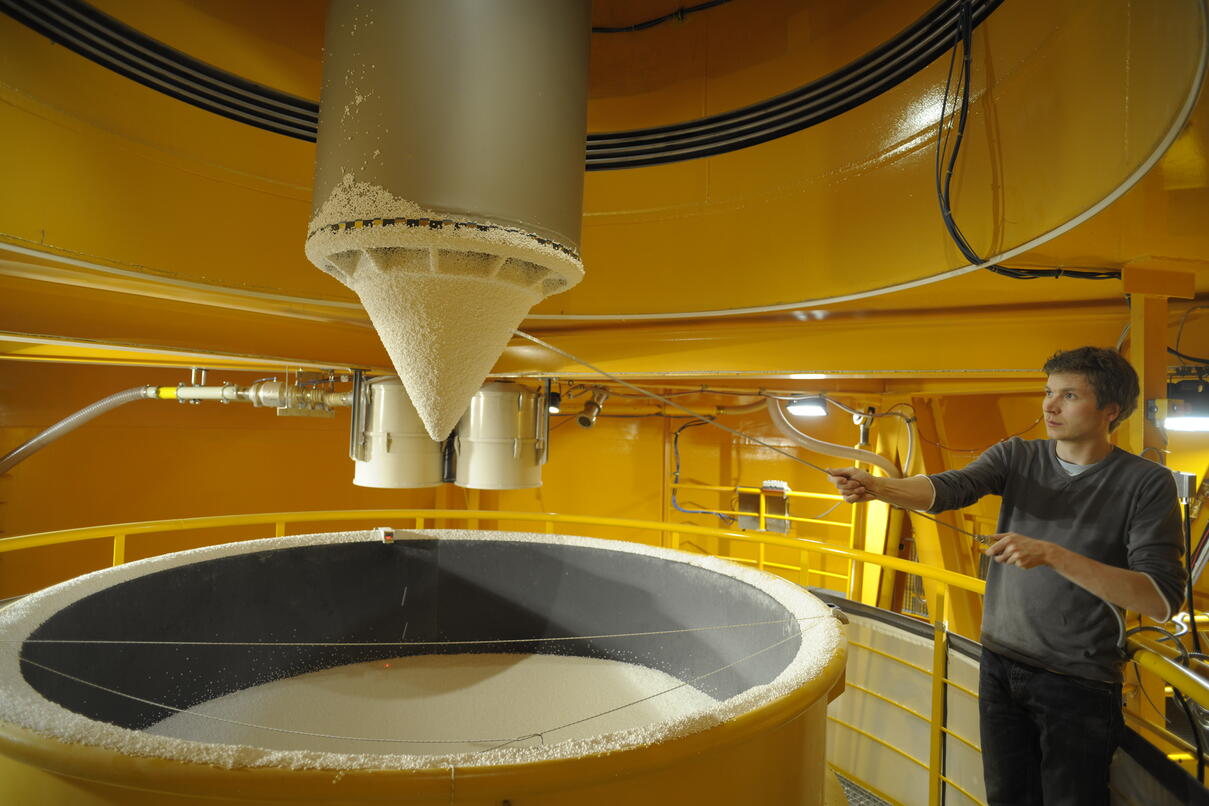
Figure 1: The drop tower building

Figure 2: View up into the drop tower

Figure 3: The curcumference of the capsule of approx. 600 mm imposed restrictions.

Figure 4: The optical freuquency comb withstands 41.5 g deceleration.
World’s First Optical Frequency Comb in Microgravity Environment
Zentrum für Angewandte Raumfahrttechnologie und Mikrogravitation (ZARM) & Menlo Systems
Authors: Sven Herrmann (ZARM)
Contact email address: b.sprenger@menlosystems.com
For the first time ever on March 4, 2010 at the Center of Applied Space Technology and Microgravity in Bremen (Fig. 1, 2), a team of scientists has dropped a phase locked Optical Frequency Comb in a 110 m high drop tower giving 4.7 sec of microgravity environment.
Better clocks in space: Optical Frequency Combs as key component are currently tested as first step in the microgravity environment (ZeroG) realized in the drop tower in Bremen. A sealed capsule housing the comb system is dropped down in an evacuated tower. Watch the video below to see the entire drop experiment of the frequency comb:
The ZeroG experiments aim for giving answers to some fundamental questions, too. In the near future the scientists hope to combine a Bose-Einstein condensate and an optical comb in one capsule allowing to perform precision measurements of quantum gases in zero gravity (Quantus Collaboration). Better test of e.g. the equivalence principle will only be one of the challenging applications.
System specifications
Latest generation of Er:doped fiber frequency comb, model no. FC1500-250-WG.
Additional fiber amplifiers and high power measuring ports for simultaneous measurements of two lasers in the NIR.
Customization
The drop tower environment imposed quite some challenges that had to be overcome by our engineers. The optical comb not only has to be phase locked during the drop time but also has to withstand the deceleration when the capsule hits ground again. After all, the team in Bremen wants to repeat the drop experiments many times. Further, the geometry of the capsule with circumference of approx. 600 mm imposed some restrictions (Fig. 3) as well as the need for the system to run off a battery pack during drop time.
The main achievement that was brought forward for this campaign is the integrated waveguide version of the f:2f interferometer (WG stands for waveguide in the model no.). Whereas all previous versions of the f:2f interferometer made use of at least partial free space propagation of light, the f:2f WG is fully integrated. The supercontinuum is fiber coupled to a waveguide chip for the frequency doubling followed by a directly fiber coupled detection unit.
We were happy to see that the f:2f WG as well as the complete system withstand the 41.5 g deceleration when the capsule hit the tank of foam first on March 4 and many time since then in repeated drop campaigns (Fig. 4).